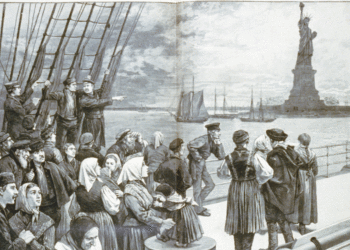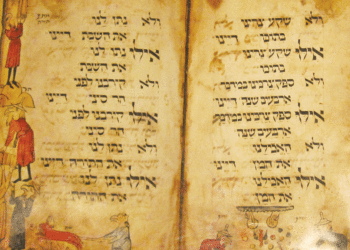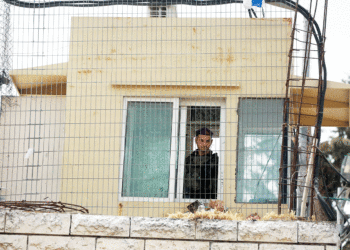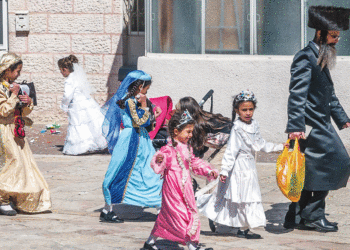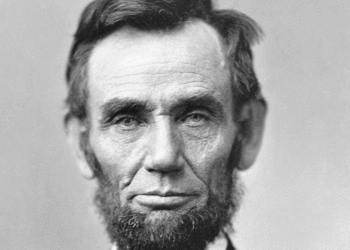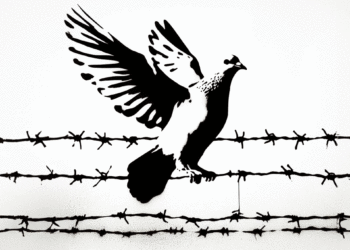The Jewish future in Minnesota depends on what we envision and initiate today
By HAYIM HERRING
Imagine that you’re the biblical Abraham. You and your wife, Sarah, are literally the founders of a start-up nation. To ensure its continuity, you ask, “What is one important thing that I can leave for my descendants that they will need 100 years from now?”
Perhaps that question stimulated an ancient rabbinic suggestion about how the Israelites were able to build a wooden ark while traveling in the desert. According to this interpretation, Abraham had planted trees in Beersheva. Before his grandson, Jacob, and his clan leave a famine-stricken Israel for bountiful Egypt, he stopped in Beersheva, harvested these trees and brought them with him. When the Israelites were liberated from Egyptian slavery generations later, they had the basic raw material for the ark — the trees that Abraham had planted and Jacob had harvested.
Abraham and Jacob knew that they could not create a detailed map of a far-off future in which they would not be alive. But, as leaders of the tribe, it was up to them to ensure that their descendants would have timeless raw materials to use in constructing their own Jewish future. So, too, what the Jewish community in Minnesota will look like 100 years from now depends upon the raw materials that we plant now, which I believe are intangible attitudinal and interpersonal changes.

With a total Jewish population of about 45,000, we are a smaller Midwestern Jewish community, with the majority of the Jewish population concentrated in the Twin Cities metro area, and small Jewish communities in Duluth and Rochester. We’re not Nebraska (about 6,000), but we’re not Ohio (about 150,000). The trajectory of smaller Midwestern Jewish communities is gradual decline, but that is not inevitable. Equally true, even if we downsize numerically, we can still upsize our Jewish quality of life.
Today, even post-recession and post-Madoff, we are still a relatively robust Jewish community. But many congregations and organizations are financially stressed. With some unprecedented demographic challenges and technological trends, they have reason to worry. Alternatively, with some unprecedented actions, we all have reason for optimism.
Here are several big realities that, depending upon how today’s leaders address them, will change the face of Minnesota Jewry decades from now:
- A decreased need for “big box” Jewish buildings, as people become less dependent on permanent space and more accustomed to flexible, on-demand locations and digital meet-ups.
- An overall intermarriage rate in the Twin Cities that already stood at 35 percent in the most recent community of 2004, and will possibly result in a future Jewish population that includes many people who are not Jewish.
- Increased human longevity, where having four generations of families alive at one time is the norm.
Some of the implications are…
Fewer big-box Jewish buildings: Think more I.P. and less P.O.
Congregations and Jewish organizations could ease some financial burdens by lifting self-imposed barriers. For example, why aren’t the back office functions of most Jewish organizations and congregations merged, especially when it can be done in a way that preserves some level of their autonomy? Even better, acknowledging well-placed pride in the past, wouldn’t it serve Jewish Minnesotans better if some congregations and organizations merged and had multiple sites, enabling them to close or lease underperforming ones, relocate to better locations and capitalize more on the community-wide talent pool?
This kind of approach could also open up services to Jews in Rochester and Duluth — and far-flung counties in the metro area. With a more open network way of viewing our organizational landscape, and technologies and improved transportation that connect people more easily, mergers, collaborations and strategic partnerships could further and deepen the reach of organizations and congregations. We are used to thinking P.O. addresses (physical locations), but the future will be based equally in I.P. (Internet Protocol) addresses.
Redefinition of Jewish community: You don’t have to be Jewish to be a part of it
Dr. Steven M. Cohen and Rabbi Joy Levitt, in an April 2015 JTA op-ed article titled “If You Marry a Jew, You’re One of Us,” argued that the Jewish community should be less reactive and more proactive with interfaith couples.
They wrote: “One answer [to intermarriage] is for all of us to change the way we think of, and treat, those who love and marry our children, family members and friends. Basically we should agree and fully internalize the idea: If you marry a Jew, you’re fully part of our community until proven otherwise.”
Liberal denominational leaders understand and passionately defend denominational differences. But every day progressive, secular and cultural Jews see increasing denominational similarities and care more about their individual lives, friends and families. With the approach recommended by Cohen and Levitt, the combined forces of liberal congregations, federations and JCCs, acting in a coordinated, interdependent fashion, could therefore become a force like Chabad for engaging a very diverse non-Orthodox Jewish community that includes people who aren’t Jewish and LGBTQ Jews, just to name two significant groups who feel marginalized. In fact, we might even grow numerically, and demographic growth translates into more future supporters of a high-quality Jewish life.
At the same time, I would hedge our communal bet against this kind of radical openness by also investing more in Orthodoxy and other non-Orthodox intensive communities. However, the quid pro quo for support of these communities would have to be clearly demonstrated concern for the well-being of the broader Jewish community. Orthodox birth rates are higher than non-Orthodox, and there is a feminist revolution happening in Orthodoxy that will make it even more attractive to non-Orthodox ritually observant Jews who want a Shabbat community. If it turns out that the bet on radical inclusion is wrong, it can be offset by a simultaneous investment in Orthodoxy and other deeply intensive Jewish communities.
From generation to generation to generation to generation
How do we help four generations develop sustained, significant relationships with one another, where each generation is respected for what it has to offer and supported throughout lifecycle changes?
One example relevant now to many of my boomer peers: we often find ourselves helping aging parents and adult children in various ways, sometimes needing help ourselves, and gaining or hoping to gain the joy of being grandparents. Each of these four generations has its unique physical needs and spiritual desires, and we can explore how the Jewish community can play a role both in helping individual families, and harnessing the wisdom, dignity, achievements and talents for the benefit of the broader Jewish community.
“Continuum of Care” campuses made tremendous sense when people lived into their late 70s and early 80’s, and experienced loss of independence over several years. But these facilities are removed from densely Jewish residential neighborhoods. As many people live longer active lives, is there another model that could promote sustained multi-generational relationships? That’s an ideal question for communities that are attuned to spiritual dimensions of life to consider.
***
These essential raw materials to help ensure a rich Jewish life in Minnesota are intangible. They include thinking more “bytes and clicks” than “bricks and mortar,” expanding our definition of who counts when numbering the Jewish community, and discerning the challenges and potential of a multigenerational, multifaceted community. In some ways, it’s a greater challenge to accumulate these intangibles, because unlike bricks and mortar, you can’t touch them. On the other hand, we have a reliable track record of using our compassion and wisdom to dream about worlds that we won’t see but can help envision.
***
Rabbi Hayim Herring, Ph.D., is an author, futurist and presenter and C.E.O. of HayimHerring.com, whose specialty is “preparing today’s leaders for tomorrow’s organizations.”
(American Jewish World, 7.31.15)









